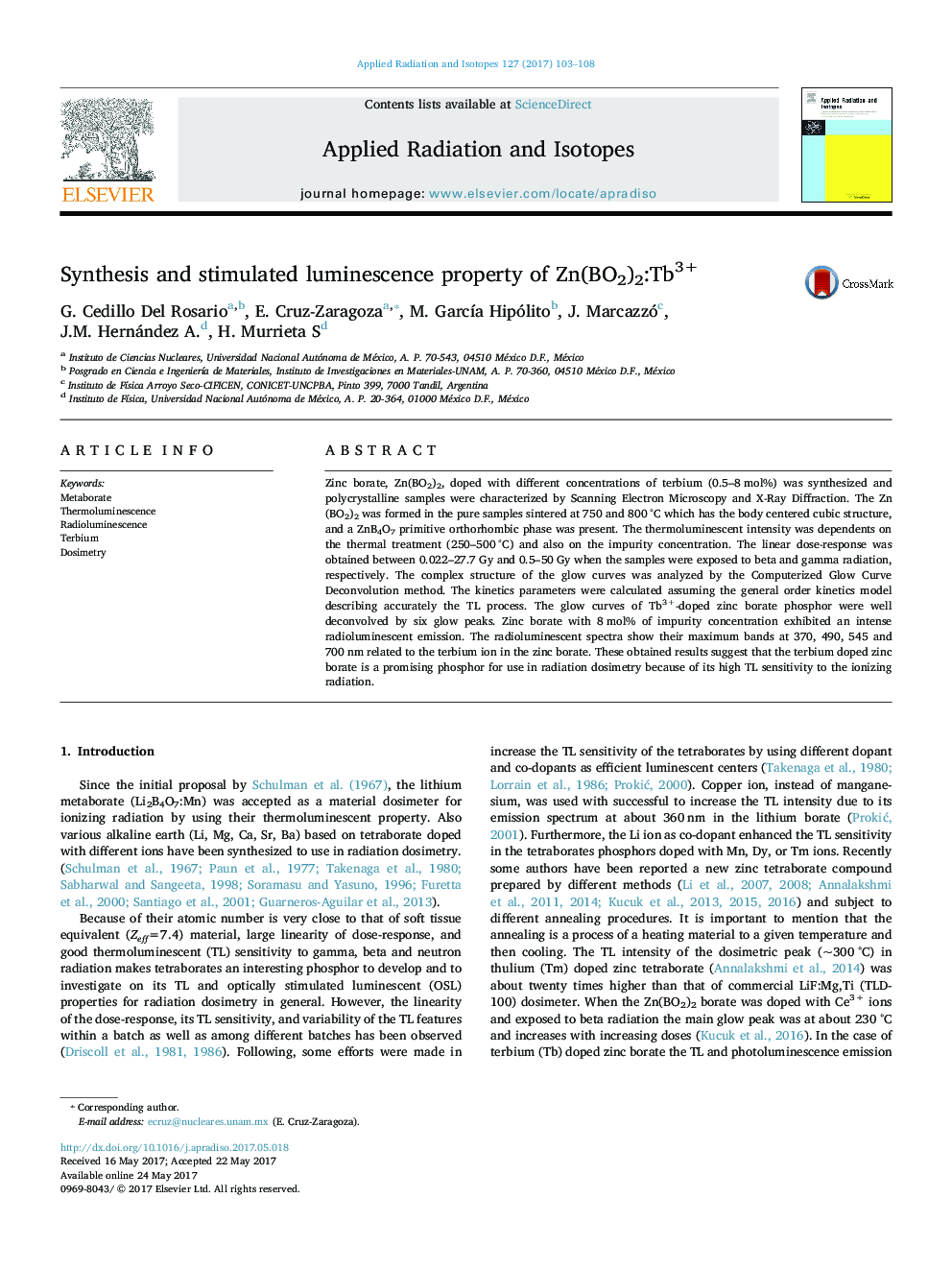| Article ID | Journal | Published Year | Pages | File Type |
|---|---|---|---|---|
| 5497754 | Applied Radiation and Isotopes | 2017 | 6 Pages |
Abstract
Zinc borate, Zn(BO2)2, doped with different concentrations of terbium (0.5-8 mol%) was synthesized and polycrystalline samples were characterized by Scanning Electron Microscopy and X-Ray Diffraction. The Zn(BO2)2 was formed in the pure samples sintered at 750 and 800 °C which has the body centered cubic structure, and a ZnB4O7 primitive orthorhombic phase was present. The thermoluminescent intensity was dependents on the thermal treatment (250-500 °C) and also on the impurity concentration. The linear dose-response was obtained between 0.022-27.7 Gy and 0.5-50 Gy when the samples were exposed to beta and gamma radiation, respectively. The complex structure of the glow curves was analyzed by the Computerized Glow Curve Deconvolution method. The kinetics parameters were calculated assuming the general order kinetics model describing accurately the TL process. The glow curves of Tb3+-doped zinc borate phosphor were well deconvolved by six glow peaks. Zinc borate with 8 mol% of impurity concentration exhibited an intense radioluminescent emission. The radioluminescent spectra show their maximum bands at 370, 490, 545 and 700 nm related to the terbium ion in the zinc borate. These obtained results suggest that the terbium doped zinc borate is a promising phosphor for use in radiation dosimetry because of its high TL sensitivity to the ionizing radiation.
Related Topics
Physical Sciences and Engineering
Physics and Astronomy
Radiation
Authors
G. Cedillo Del Rosario, E. Cruz-Zaragoza, M. GarcÃa Hipólito, J. Marcazzó, J.M. Hernández A., H. Murrieta S,
